Unlocking the Allure of Japanese Eye Makeup
Want to master the art of Japanese eye makeup? This listicle explores eight distinct J-beauty eye looks, from the playful Gyaru style to the subtle enhancing of monolids. Learn techniques like the doll-eye (Ningyo-me), Aegyo Sal, and the downturned cat-eye (Tareme), alongside gradient eyeshadow and invisible eyeliner application. Discover the secrets to captivating eyes and elevate your makeup game with these Japanese eye makeup trends.
1. Gyaru Eye Makeup (Gal-Style Eyes)
Gyaru eye makeup, a hallmark of Japanese street style, epitomizes the dramatic and doll-like aesthetic popularized by fashion subcultures like those found in Shibuya and Harajuku. This distinctive Japanese eye makeup look centers around creating the illusion of enlarged, almost anime-like eyes through strategic application of eyeliner, mascara, false lashes, and eyeshadow. The aim is to achieve a wide-eyed, innocent yet edgy look that is both captivating and highly stylized. It's a bold departure from more natural makeup trends, offering a unique and expressive way to play with eye shape and size. This style relies heavily on creating intense definition and contrast, resulting in a look that’s instantly recognizable and undeniably striking.
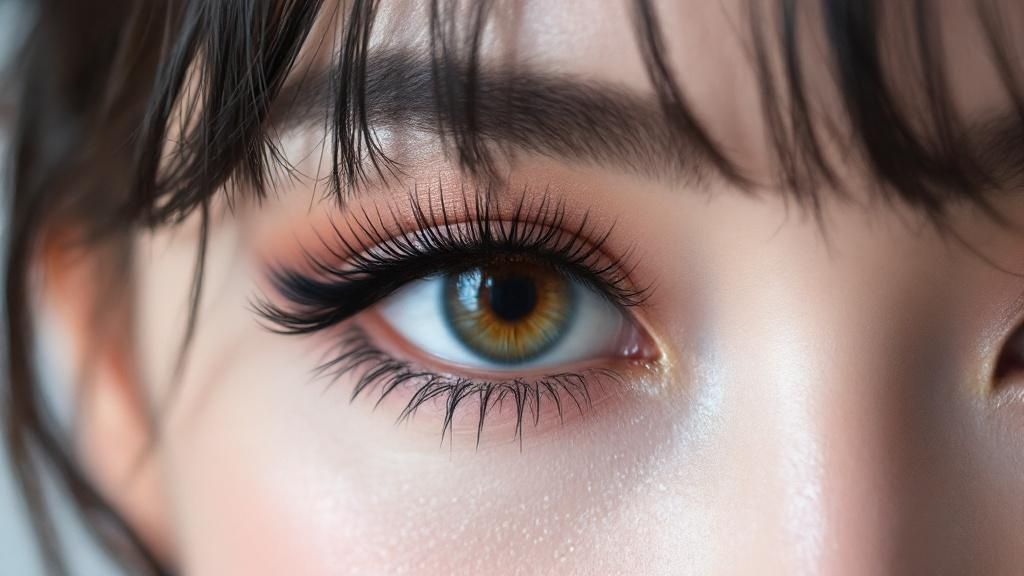
The essential elements of gyaru eye makeup include thick, defined lines of black or dark brown eyeliner along both the upper and lower lash lines. This heavy lining extends outward and slightly upward beyond the outer corner of the eye, creating a winged effect that elongates and lifts the eye. Multiple coats of volumizing mascara or, more commonly, several sets of dramatic false eyelashes, both top and bottom, further enhance the wide-eyed appearance. While the liner and lashes provide the framework, light, shimmery eyeshadows in pink, white, or nude tones add a touch of brightness and enhance the illusion of larger eyes. A key aspect of this Japanese eye makeup style is the emphasis on lower lash line definition. Often, a white or nude eyeliner is used on the waterline to further open up the eye and create a doe-eyed effect. Gyaru makeup is also frequently paired with circle contact lenses, which physically enlarge the iris, contributing to the overall doll-like look.
The impact of gyaru makeup is undeniable. It creates dramatically larger-looking eyes, making it exceptionally photogenic and camera-ready. It also provides ample opportunity for creative expression, allowing individuals to experiment with different lash styles, liner shapes, and color combinations. Think of Japanese fashion magazines like Popteen and Egg, or the distinctive looks of J-pop idols and visual kei artists—gyaru makeup is a staple in these visual landscapes. Popularized by figures like model and makeup artist Tsubasa Masuwaka and Kumiko Funayama (Kumicky), and championed by brands like Dolly Wink and Kiss Me, gyaru eye makeup has cemented its place as a defining trend in Japanese beauty.
However, this intricate Japanese eye makeup technique has its drawbacks. Achieving the perfect gyaru look can be time-consuming, requiring patience and precision in both application and removal. The dramatic nature of the style might be considered too over-the-top for everyday wear in some settings. Furthermore, mastering the techniques, especially eyeliner application and lash placement, requires practice to avoid a harsh or unbalanced appearance.
For those eager to try this captivating Japanese eye makeup style, here are a few helpful tips. Begin with a waterproof eyeliner to prevent smudging, especially given the heavy application involved. When applying false lashes, build them up in layers for maximum impact, ensuring they are securely adhered to avoid any mishaps. Practice blending techniques to soften any harsh lines and create a seamless transition between eyeshadow and liner. Finally, to maximize the eye-enlarging effect, apply a white or nude eyeliner to your waterline.
Gyaru eye makeup is more than just a trend; it’s a form of self-expression. Its striking aesthetic and distinct features have earned it a prominent place in Japanese beauty culture. While it may not be for everyone, those seeking a bold and dramatic Japanese eye makeup look are sure to be captivated by the transformative power of gyaru. Learn more about Gyaru Eye Makeup (Gal-Style Eyes)
2. Doll-Eye Technique (Ningyo-me)
The Doll-Eye technique, or Ningyo-me (人形目), offers a distinctly Japanese approach to eye makeup, emphasizing a sweet, youthful, and innocent look reminiscent of traditional Japanese dolls. Unlike the bolder gyaru style, Ningyo-me focuses on creating larger, rounded eyes through subtle gradations and soft lines, resulting in a gentle, feminine aesthetic that’s highly adaptable for various eye shapes and occasions. This technique is a cornerstone of Japanese eye makeup, popular for its versatility and wide-eyed charm.
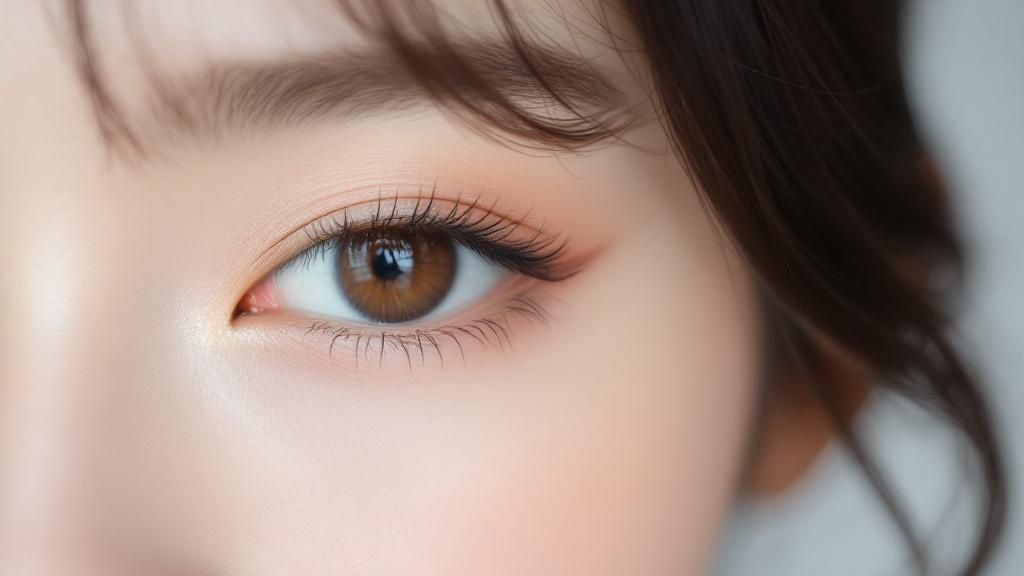
The Ningyo-me technique centers around creating a rounded, doe-eyed appearance. Instead of sharp wings or dramatic cat-eye flicks, the eyeliner follows the natural curve of the eye, often extending slightly downwards at the outer corner to enhance the roundness. Soft, gradient eyeshadows in pastel or neutral tones like peach, pink, and beige are blended seamlessly to create a soft, diffused look. Emphasis is placed on both upper and lower lashes, often using volumizing mascaras and even false lashes to create a wide-eyed effect. Subtle highlighting in the inner corners further brightens the eyes, while enhancing the aegyo sal (the small puffy area under the eyes) adds to the youthful, innocent appeal. This focus on rounded shapes and gentle enhancements distinguishes Ningyo-me from other Japanese eye makeup styles, making it a perfect choice for those seeking a more natural yet captivating look.
The Doll-Eye technique has become increasingly popular, particularly among K-pop and J-pop idols, influencing makeup trends across East Asia. You'll often see this style featured in Japanese dramas, anime-inspired looks, and kawaii (cute) fashion movements. This widespread adoption speaks to the technique's versatility and appeal, demonstrating its effectiveness in achieving a youthful, approachable aesthetic. Makeup artist Pony, though Korean, has also been a significant influence in popularizing this style, showcasing its adaptability and cross-cultural appeal. Brands like Canmake and Etude House cater to this trend with products specifically designed for creating the Ningyo-me look, offering readily available tools for those eager to try the technique. Their popularity further solidifies Ningyo-me's place as a staple in modern East Asian makeup.
One of the biggest advantages of Ningyo-me is its wearability. Compared to the more dramatic gyaru style, the Doll-Eye technique is much more suitable for daily use, from school or work to casual outings. Its subtle enhancements create a naturally youthful and innocent appearance, making it appropriate for a variety of social contexts. However, this subtlety can also be a drawback. In photographs, the delicate nuances of Ningyo-me might not be as noticeable, requiring more pronounced application for photoshoots or events where capturing the look is essential. Achieving a truly natural-looking result also requires precision and blending skills, as harsh lines or poorly blended eyeshadow can detract from the intended softness of the look.
For those interested in trying the Ningyo-me look, here are some actionable tips: Opt for brown eyeliner instead of black for a softer, more natural definition. Apply eyeshadow in a circular motion rather than elongated strokes, focusing on blending the colors seamlessly to create a gradient effect that emphasizes round shapes. Avoid sharp angles or cat-eye flicks, as the goal is to enhance the natural roundness of the eyes. Incorporate pink or peach blush on the cheeks to complement the eye makeup and further enhance the youthful effect. Using a light, shimmery eyeshadow or highlighter on the inner corners and brow bone will also brighten and open up the eyes, adding to the doll-like appearance. Finally, don't forget to enhance your aegyo sal with a subtle highlighting shade to complete the look. By following these tips and practicing the techniques, anyone can achieve the charming, wide-eyed beauty of Ningyo-me, embracing a quintessential element of Japanese eye makeup.
3. Monolid Enhancement Technique
Monolid eyes, a beautiful characteristic common in East Asian populations, often present a unique canvas for makeup application. The monolid enhancement technique is a specialized approach to eye makeup developed specifically to accentuate this eye shape. Unlike Western makeup techniques that emphasize the crease, this method focuses on creating the illusion of depth and dimension without relying on a visible crease. It achieves this through strategic color placement, clever eyeliner techniques, and a focus on enhancing the lashes. This technique is an integral part of Japanese eye makeup, offering a nuanced approach that respects and celebrates natural beauty. It allows for stunning and expressive looks specifically tailored to monolids.
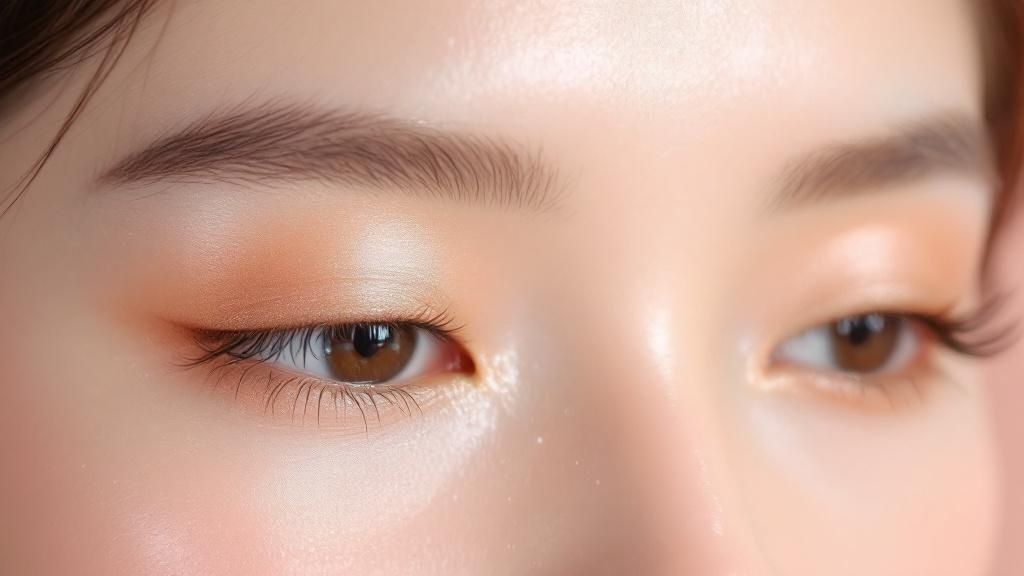
The core of this technique lies in understanding how to manipulate light and shadow on the eyelid. Instead of applying eyeshadow in the traditional crease-focused method, a gradient application from the lash line to the brow bone is employed. Darker shades are strategically concentrated along the lash line to create a subtle definition, gradually blending into lighter shades as you move upwards. This gradient effect mimics the appearance of a natural crease, adding depth and dimension without actually needing one. Eyeliner also plays a crucial role. A thin line at the inner corner gradually thickens towards the outer corner, subtly lifting and elongating the eye. Instead of focusing on the eyelid space, this technique prioritizes lash enhancement. Voluminous lashes further open up the eye and contribute to the overall illusion of depth. For those who desire a more dramatic look, temporary crease creation using eyelid tape or glue is also a common practice within this technique.
The popularity of this technique is evident in its widespread use across Asian beauty communities. You can find numerous examples of successful implementation in Korean and Japanese beauty tutorials and campaigns by Asian beauty brands like Shiseido. Beauty influencers, like Michelle Phan and Korean makeup artist Jung Saem Mool, have further popularized these methods, showcasing diverse and innovative looks tailored to monolids.
This approach offers numerous advantages, especially for those with monolid eye shapes. It’s designed specifically to enhance this unique feature, creating depth without requiring a natural crease. The result is a natural-looking enhancement that celebrates, rather than tries to change, the natural eye shape. However, it’s important to be aware of the potential drawbacks. These techniques may not translate effectively to other eye shapes, and the visibility of eyeshadow can be limited when the eyes are open. Furthermore, it necessitates a different approach than Western techniques, requiring a learning curve for those unfamiliar with it. Learn more about Monolid Enhancement Technique While this link may lead to a seemingly unrelated article, exploring different aspects of Japanese beauty routines can provide valuable context and further insights.
For those keen on experimenting with Japanese eye makeup and the monolid enhancement technique, here are some actionable tips: Apply your eyeshadow with your eyes open. This allows you to see the actual visibility of the colors on your monolid and adjust accordingly. Matte shades tend to adhere better to monolids compared to shimmery ones, providing a smoother and more lasting finish. Don't neglect the lower lash line; defining it can add significant depth and balance to the overall look. Finally, if you're looking for a more dramatic effect for special occasions, experiment with eyelid tape to create a temporary crease.
This technique deserves a prominent place in any discussion about Japanese eye makeup because it represents a fundamental shift in approach, moving away from a one-size-fits-all mentality to a more inclusive and tailored approach. It acknowledges and celebrates the beauty of monolids, offering specific techniques and tools designed to enhance their unique characteristics. This method is not just about applying makeup; it’s about embracing and celebrating natural beauty. It’s a testament to the artistry and innovation found within Japanese beauty practices.
4. Aegyo Sal (Under-Eye Bags) Technique
Aegyo sal, often translated as "charming fat" or "cute eye bags," is a distinctive feature of Japanese eye makeup, as well as Korean beauty trends, that emphasizes the small pockets of fat directly beneath the lower eyelid. Unlike the dark circles or puffiness typically associated with fatigue or aging, aegyo sal is deliberately highlighted to create a youthful, innocent, and endearing look. This technique plays a key role in achieving the widely coveted "doll-eyed" aesthetic in Japanese makeup, contributing to a brighter, wider-eyed appearance. It distinguishes itself from traditional Western makeup, which often aims to conceal under-eye bags, showcasing a unique aspect of Japanese beauty ideals.

Aegyo sal is created using a combination of highlighting and subtle shadowing techniques. A light, shimmery eyeshadow, typically in champagne, pearl, or pale pink tones, is applied directly underneath the lower lash line, concentrating on the inner two-thirds of the eye. This highlight mimics the natural fullness of youthful under-eye fat. Following the highlight, a matte, neutral brown eyeshadow, slightly darker than the skin tone, is applied just below the highlight to create a subtle shadow effect. This shadow is crucial for defining the aegyo sal and preventing it from looking like general puffiness. The combined effect of the highlight and shadow creates the illusion of naturally plump under-eye bags, enhancing the eyes’ perceived size and adding a touch of youthful charm to the overall Japanese eye makeup look.
Successful implementation of the aegyo sal technique relies on subtlety and precision. The goal is to enhance, not create, under-eye fullness. Overdoing the highlight or shadow can easily lead to an unnatural or exaggerated appearance. Many Japanese makeup tutorials showcase the delicate balance needed to achieve this look effectively, demonstrating how strategic placement and blending create a seamless transition between the aegyo sal and the rest of the under-eye area. Popular Japanese makeup artist, Pony, along with various J-Pop idols, have popularized this technique, solidifying its place as a staple in modern Japanese beauty trends. Their influence has helped spread awareness and provided valuable examples of successful aegyo sal application.
Here are some tips for incorporating aegyo sal into your Japanese eye makeup routine:
- Use a small, precise brush: This allows for controlled application and helps prevent the highlight and shadow from spreading too far.
- Choose the right shade: Opt for champagne, pearl, or pale pink tones for the highlight, and a matte brown that is one or two shades darker than your skin tone for the shadow.
- Apply sparingly and build up gradually: It’s easier to add more product than to take it away. Start with a small amount and build up the intensity until you achieve the desired effect.
- Blend well: Avoid harsh lines by blending both the highlight and the shadow seamlessly into the surrounding skin.
- Consider aegyo sal tape or makeup: For those without naturally prominent under-eye fat, specialized tapes or makeup products can help create a more defined aegyo sal.
While aegyo sal can be incredibly flattering, it's important to be aware of its potential drawbacks. It may emphasize existing under-eye bags or dark circles, so those concerned about these features may want to proceed with caution. It's also not universally flattering on all face shapes and can look unnatural if overdone.
Ultimately, aegyo sal is a valuable tool in Japanese eye makeup, offering a unique way to achieve a youthful, innocent, and wide-eyed look. By understanding the technique and following the tips provided, you can effectively incorporate aegyo sal into your makeup routine and embrace this charming element of Japanese beauty. Its ability to enhance the eyes and contribute to a softer, more youthful appearance explains its popularity and secures its place as a key technique in Japanese eye makeup.
5. Cat-Eye with Downturned Corners (Tareme Style)
This unique approach to eyeliner application distinguishes itself from its Western counterpart, offering a softer, more innocent appeal. The tareme style, meaning "droopy eyes," flips the script on the traditional upward flick of the cat-eye, extending the liner downwards at the outer corner. This subtle shift creates a captivating look that has taken the Japanese beauty world by storm. If you're looking to incorporate a touch of Japanese flair into your makeup routine, the tareme eye is a must-try technique. This method is a cornerstone of Japanese eye makeup trends, offering a unique alternative to the sharp, angled lines favored in Western makeup.
The tareme style achieves its distinctive look through several key features. Firstly, the downward flick of the eyeliner is the most defining characteristic. Instead of winging the liner up towards the temple, you extend it slightly downwards, following the natural curve of the lower lid. This creates the illusion of larger, rounder eyes with a gentle, almost sleepy appearance. Emphasis on the lower lash line further enhances this effect. By extending the liner or eyeshadow slightly beyond the outer corner of the eye along the lower lash line, you create a soft, rounded shape that contributes to the overall innocent look. The inner corners of the eyes are kept soft and rounded, avoiding any harsh lines or sharp angles, maintaining the gentle and approachable aesthetic. This style is often paired with light, natural eyeshadows in soft pinks, peaches, or browns to complement the delicate eyeliner and enhance the overall impression of youthfulness. The combined effect of these elements results in a sleepy, gentle expression, often described as innocent or even doll-like.
The tareme style offers several advantages. It creates a unique, innocent appearance that sets it apart from more common makeup trends, giving you a distinct and memorable look. It also softens strong or angular eye shapes, making it a flattering choice for those with sharper features. Perhaps most importantly, it provides a refreshing alternative to Western makeup trends, allowing you to experiment with a different aesthetic and embrace a style that’s distinctly Japanese.
However, like any makeup technique, the tareme eye also has its potential drawbacks. It may make eyes appear smaller if not applied carefully. The downward flick, while creating the desired droopy effect, can also inadvertently make the eyes seem less open. It can also look sad or tired if not balanced properly. Achieving the right balance between the downward flick and the rest of the makeup is crucial to avoid an unintentional melancholic expression. Finally, it requires practice to achieve the right angle. Mastering the delicate downward flick takes some experimentation to find the perfect angle that complements your individual eye shape.
The tareme style's popularity can be seen across various aspects of Japanese culture. It's a popular choice in Japanese street fashion, where individuality and self-expression are highly valued. Japanese actresses often utilize this technique for innocent roles, further cementing its association with youthfulness and gentleness. It’s also a common feature in anime and manga character designs, where large, expressive eyes are a staple. Examples of its use abound in popular culture, reflecting its widespread adoption.
Learn more about Cat-Eye with Downturned Corners (Tareme Style)
Here are some tips for successfully achieving the tareme look: Use brown eyeliner for a softer effect, particularly if you’re new to this style. The softer hue can help ease the transition and prevent the downward flick from appearing too harsh. Balance with well-defined upper lashes. Applying mascara or using false lashes on the upper lashes helps to open up the eyes and counteract the potentially shrinking effect of the downward liner. Practice the angle to avoid looking too droopy. Experimentation is key to finding the sweet spot that creates the desired gentle look without making the eyes appear closed or sad. Pair with bright, healthy-looking cheeks. This adds a touch of vibrancy and prevents the overall look from appearing washed out. This style, popularized by Japanese fashion magazines, anime and manga culture, and actresses like Yui Aragaki, epitomizes a specific kind of Japanese aesthetic centered around gentle, approachable beauty. This approach to Japanese eye makeup offers a distinctive and captivating alternative to traditional eyeliner styles. Its unique blend of innocence and artistry makes it a worthwhile addition to any makeup enthusiast's repertoire.
6. Gradient Eyeshadow Technique (Gradation Eye)
The Gradient Eyeshadow Technique, often referred to as "Gradation Eye" in Japan, is a cornerstone of Japanese eye makeup. This sophisticated application method focuses on seamlessly blending multiple eyeshadow shades to create a beautiful, dimensional look. Unlike Western eye makeup trends that sometimes emphasize sharp lines and contrasting colors, Japanese gradation eye makeup prioritizes smooth transitions and a natural, ethereal finish. This technique is a key reason why Japanese eye makeup often appears so polished and effortlessly chic, making it a highly sought-after skill for makeup enthusiasts worldwide. If you're aiming to elevate your Japanese eye makeup game, mastering the gradation eye is essential.
The core principle of the gradation eye technique lies in the careful blending of typically three to four complementary eyeshadow shades. This usually progresses from a light base color to a darker shade in the crease, creating depth and dimension. Analogous color schemes, where colors sit next to each other on the color wheel, are also popular. Think of soft peaches melting into warm oranges or delicate pinks transitioning to rosy browns. These color families are frequently used in Japanese eye makeup, offering a subtle yet captivating enhancement to the eyes. The emphasis on smooth transitions ensures that there are no harsh lines, resulting in a soft, diffused look that complements the natural contours of the eye.
The benefits of this technique are numerous. First and foremost, it creates a sophisticated, professional look that is suitable for both day and evening wear. By subtly contouring the eyelid with color, gradation eye makeup naturally enhances the eye shape, making eyes appear larger and more defined. This technique is particularly flattering on a variety of eye shapes, from monolids to double eyelids, adding a touch of elegance without appearing overly dramatic.
While the results are stunning, achieving the perfect gradation eye requires practice and the right tools. Good blending skills are crucial for seamlessly merging the colors and avoiding any harsh demarcations. This technique is often more time-consuming than simply applying a single wash of color, as it requires patience and attention to detail. Investing in quality brushes, particularly a fluffy blending brush, is also essential for achieving a professional finish.
Despite the learning curve, the beautiful results are well worth the effort. The subtle yet sophisticated look achieved through the gradation eye technique is a hallmark of Japanese makeup artistry and is frequently featured in popular Japanese beauty magazines like Voce. Its versatility makes it a popular choice among Japanese office workers seeking a polished yet professional look, while its elegant simplicity also finds its place in traditional Japanese makeup styles. Learn more about Gradient Eyeshadow Technique (Gradation Eye) at https://buymejapan.com/blogs/japanese-skincare-and-beauty/japanese-makeup-tutorial-secrets-to-effortless-j-beauty. You can find inspiration and detailed tutorials to help you master this technique.
To create your own gradation eye look, begin by applying the lightest shade across the entire eyelid as a base. Then, gradually build the medium shade in the crease, working in small, circular motions with a fluffy blending brush. For added depth, apply the darkest shade along the lash line and outer corner of the eye, blending carefully into the crease color. Setting the eyeshadow with a translucent powder will prevent creasing and ensure your look lasts throughout the day. Remember, the key is to build the colors gradually rather than applying them heavily, allowing for a smooth and natural transition between shades.
The popularity of the gradation eye technique can be attributed to the influence of Japanese makeup artists, beauty education systems, and brands like Suqqu and Addiction, known for their high-quality eyeshadow palettes and expert application techniques. Their emphasis on subtle elegance and flawless blending has cemented the gradation eye's status as a staple in Japanese eye makeup.
By embracing the art of seamless blending and subtle color transitions, the gradation eye technique offers a refreshing departure from bolder makeup styles. It allows you to create a sophisticated and effortlessly chic look that enhances your natural beauty, truly embodying the essence of Japanese eye makeup.
7. Invisible Eyeliner Technique
The pursuit of natural-looking enhancement is a cornerstone of Japanese eye makeup, and the "invisible eyeliner" technique perfectly embodies this philosophy. This subtle yet effective method focuses on enhancing the natural lash line without the obvious, often harsh, look of traditional eyeliner. Instead of creating a bold line, it concentrates on filling the gaps between individual lashes, resulting in a defined, fuller lash appearance that whispers rather than shouts. This technique contributes significantly to the overall ethereal and youthful aesthetic often associated with Japanese makeup.
The invisible eyeliner technique works by creating a barely-there line incredibly close to the roots of the lashes. Imagine the spaces between your lashes as tiny blank canvases. Instead of drawing a separate line above the lashes, this technique meticulously fills these spaces, creating the illusion of thicker, denser lashes. It's about creating a seamless extension of the lashes themselves, not a separate line defining the eyelid. This meticulous attention to detail is what sets Japanese eye makeup apart and the invisible eyeliner technique is a prime example.
Several key features distinguish this technique. First and foremost is the focus on tightlining. This involves applying the liner directly between the individual lashes, a process that requires a steady hand and a precise tool. Secondly, instead of stark black, softer shades of brown or dark brown are preferred, mimicking the natural color of the lashes for a seamless blend. The application itself is incredibly thin and kept as close to the lash roots as possible, further emphasizing the natural look. Finally, the emphasis is primarily on the upper lash line, with minimal, if any, product applied to the lower lid. The overall goal isn't to define the eye with a sharp line, but to enhance what’s already there.
This technique offers several advantages. It creates a natural-looking enhancement that's perfect for professional or conservative environments where bolder makeup might be inappropriate. It's ideal for achieving the popular "no-makeup makeup" look, enhancing natural beauty subtly. This makes it particularly suitable for everyday wear, giving the impression of naturally full and lush lashes without obvious makeup.
However, the invisible eyeliner technique does have some drawbacks. Its subtlety may not be as impactful in photographs, as the delicate enhancements might not be as visible. It also requires a good deal of precision and a steady hand, which can take practice to master. And finally, those who prefer a more dramatic, defined eye look may find this technique too subtle for their liking.
The invisible eyeliner technique has become a standard in Japanese business makeup, emphasizing a polished yet understated appearance. Its popularity has also surged alongside the minimalist beauty trend in Japan, reflecting a wider cultural preference for enhancing natural beauty rather than masking it. You can Learn more about Invisible Eyeliner Technique.
Examples of its successful implementation can be seen throughout Japanese media, from everyday office workers to celebrities embracing the "no-makeup makeup" look. Brands like Flowfushi and UZU, renowned for their innovative eye makeup products, have further popularized this technique with their specialized eyeliner pens designed for precision and subtle application. This technique is a testament to Japanese innovation in the beauty industry, showcasing a meticulous approach to enhancing natural features.
To achieve the perfect invisible eyeliner look, consider these tips: Use a thin, precise eyeliner brush or a very finely pointed pencil to ensure accurate application between the lashes. Gently lift your eyelid to expose the lash roots, allowing for easier access and preventing the liner from smudging. Apply the liner in short, dotting motions between the lashes, rather than trying to draw a continuous line. And most importantly, choose a liner shade that closely matches your natural lash color, typically brown or dark brown, for the most seamless and natural-looking result.
The invisible eyeliner technique deserves its place on this list as a quintessential example of Japanese eye makeup philosophy. It showcases the emphasis on subtle enhancement, natural beauty, and meticulous application, providing a fresh perspective on eyeliner application that moves beyond simply defining the eye. By mastering this technique, you can achieve the effortlessly chic and naturally enhanced look that’s synonymous with Japanese beauty. This method encapsulates the essence of Japanese eye makeup, demonstrating how less can truly be more.
8. Color Liner Accent Technique
This playful technique distinguishes Japanese eye makeup with its strategic use of color. Instead of bold, overwhelming swaths of color, the Color Liner Accent Technique incorporates subtle pops of color, typically along the lower lash line or inner corners of the eyes, to add personality and depth while maintaining a fresh, natural look. This method beautifully complements the overall minimalist aesthetic often seen in Japanese makeup trends, offering a unique way to enhance natural features and express individuality. It’s a key component of what makes Japanese eye makeup so distinctive and coveted by beauty enthusiasts worldwide.
The Color Liner Accent Technique is a brilliant way to experiment with color without committing to a full, dramatic eye look. It’s all about enhancing, not overpowering. Often implemented with gel or liquid liners for precise application, this technique typically utilizes shades like soft pink, sky blue, lavender, or even a vibrant green. These aren't loud, neon shades, but rather slightly muted tones that add a whisper of color and dimension. Imagine a delicate wash of pastel pink along the lower lash line, brightening the eyes and adding a touch of youthful charm, or a subtle hint of deep teal in the inner corner to bring out the natural warmth of brown eyes. The goal is to create a gentle contrast with neutral base makeup, letting the chosen color peek through for a subtle yet impactful effect.
The popularity of this technique stems from its versatility and ability to subtly personalize a look. It's a staple in Harajuku street fashion, a trendsetting hub known for its bold and colorful aesthetic. You’ll also see it frequently featured in Japanese pop culture, from music videos to television dramas, and embraced by J-fashion enthusiasts across the globe. Brands like Dolly Wink and Kiss Me Heroine have popularized specific products and color palettes perfectly suited for this technique, making it accessible to anyone wanting to try the look.
One of the greatest advantages of the Color Liner Accent Technique is its ability to add personality to otherwise neutral makeup looks. It's an opportunity to express your creativity and experiment with different colors to find shades that complement your eye color, skin tone, and even your outfit. A hint of purple can make green eyes pop, while a touch of blue can enhance the warmth of brown eyes. Furthermore, this technique offers a subtle yet effective way to coordinate your makeup with your accessories or clothing, creating a cohesive and stylish overall look.
However, like any makeup technique, the Color Liner Accent Technique has its nuances. While it can be a fantastic way to add a touch of playfulness, it may not be appropriate for all occasions. A vibrant pink liner might be perfect for a weekend outing but may not be suitable for a formal business setting. Additionally, successful implementation requires a degree of color coordination skill. Choosing colors that clash or applying too much product can result in a look that feels juvenile or unbalanced. Therefore, practice and a keen eye for color harmony are key to mastering this technique.
For those venturing into the world of colored liner accents, a few tips can ensure a successful and stylish outcome. Start with subtle shades like navy blue or burgundy to get a feel for the technique before experimenting with brighter hues. Apply sparingly for your first few attempts, gradually building up the intensity until you achieve the desired effect. Consider coordinating the liner color with your outfit or accessories for a polished, put-together look. And finally, opt for waterproof formulas to prevent smudging and maintain a crisp, clean line throughout the day. Sharing your looks online? If you're creating video content showcasing your Japanese eye makeup, consider crossposting your makeup looks to reach a wider audience on platforms like TikTok. According to the Crosspost YouTube to TikTok: Creator's Ultimate Growth Guide from PostOnce, this can significantly expand your reach. By mastering the Color Liner Accent Technique, you can elevate your Japanese eye makeup game and add a touch of unique, personalized flair to your everyday look.
8 Techniques of Japanese Eye Makeup Compared
| Technique | Implementation Complexity 🔄 | Resource Requirements ⚡ | Expected Outcomes 📊 | Ideal Use Cases 💡 | Key Advantages ⭐ |
|---|---|---|---|---|---|
| Gyaru Eye Makeup (Gal-Style Eyes) | High - detailed layering, skill needed | High - multiple products, false lashes | Dramatic eye enlargement, bold definition | Photogenic looks, creative expression | Creates large, doll-like eyes; highly photogenic |
| Doll-Eye Technique (Ningyo-me) | Moderate - precise, subtle blending | Moderate - soft shadows, gentle tools | Soft, youthful, innocent appearance | Everyday wear, youthful looks | Wearable daily; suitable for many eye shapes |
| Monolid Enhancement Technique | Moderate to high - requires special skills | Moderate - eyeshadow, eyeliner, tape | Creates depth without crease; natural eye enhancement | Asian monolid eyes, tutorials, influencers | Tailored for monolids; enhances natural eye shape |
| Aegyo Sal (Under-Eye Bags) Technique | Low to Moderate - specific placement | Low - light eyeshadow, small brush | Youthful, puffed under-eye look | K-beauty, social media, youthful styles | Adds dimension; youthful and innocent effect |
| Cat-Eye with Downturned Corners (Tareme Style) | Moderate - angle control needed | Moderate - eyeliner, lash emphasis | Soft, droopy, gentle eye expression | Japanese street fashion, innocent roles | Unique droopy look; softens angular eyes |
| Gradient Eyeshadow Technique | High - blending skills essential | Moderate to High - multiple shadows, brushes | Sophisticated, natural eye depth | Day & evening wear; professional looks | Professional finish; natural eye enhancement |
| Invisible Eyeliner Technique | Moderate - steady hand and precision | Low to Moderate - thin liners | Subtle lash line enhancement | Professional, minimalist, no-makeup looks | Natural, fuller lashes without obvious eyeliner |
| Color Liner Accent Technique | Moderate - color coordination skills | Moderate - colored liners (gel/liquid) | Playful, subtle pops of color | Fashion, casual, creative makeup | Adds personality; creative and customizable |
Embrace the Beauty of J-Beauty Eyes
From the bold drama of gyaru eye makeup to the subtle allure of the invisible eyeliner technique, this exploration of Japanese eye makeup trends has revealed a world of captivating possibilities. We've covered everything from creating the iconic doll-eye (ningyo-me) look and enhancing monolids, to mastering the art of aegyo sal and achieving the perfect cat-eye with downturned corners (tareme style). By understanding the core techniques, like the gradient eyeshadow (gradation eye) and strategic use of color liner accents, you can adapt these looks to suit your individual style. The key takeaways are the emphasis on precision, balance, and enhancing your natural features – principles central to the J-beauty philosophy. Mastering these concepts empowers you to create a wide range of looks, from everyday natural enhancements to striking and expressive statements, ultimately giving you the tools to express your unique beauty.
Ready to experiment with these mesmerizing Japanese eye makeup trends? Discover authentic Japanese cosmetics curated specifically for achieving these looks on Buy Me Japan. Explore a world of high-quality products and elevate your eye makeup game with the best J-beauty has to offer.
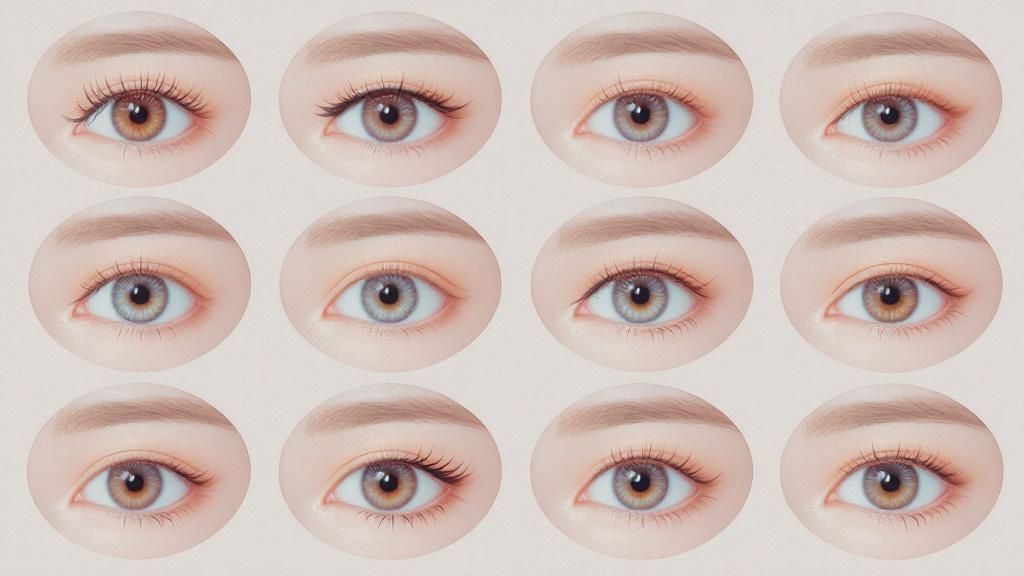
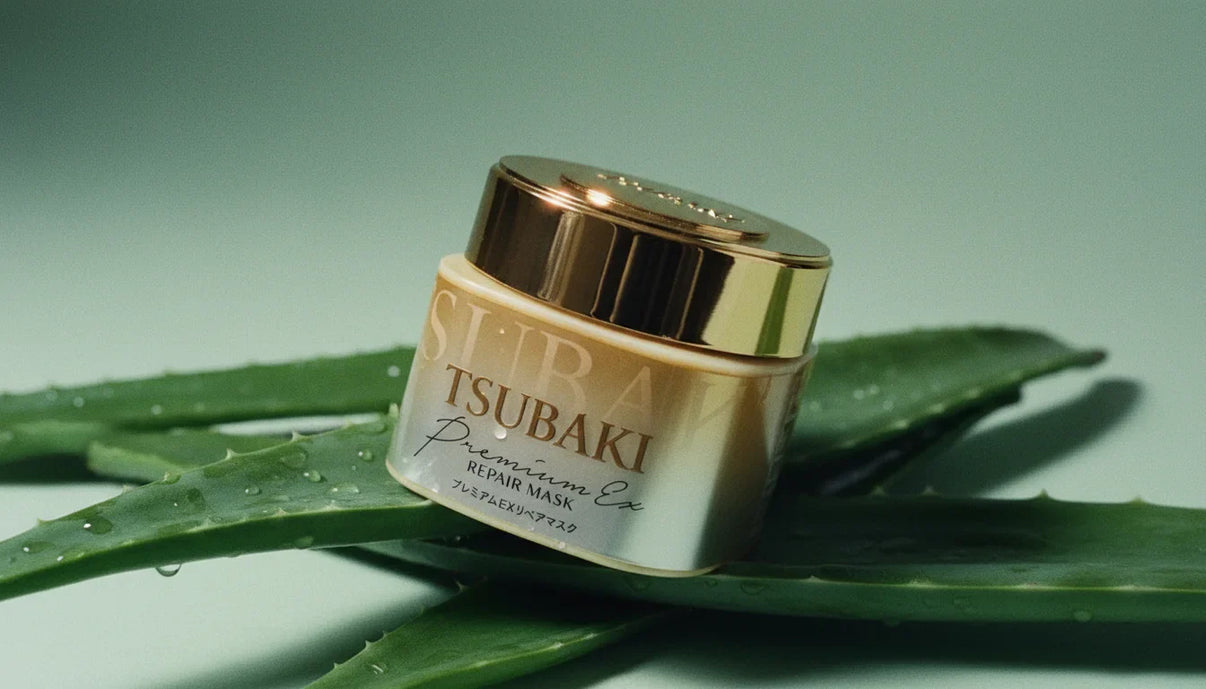

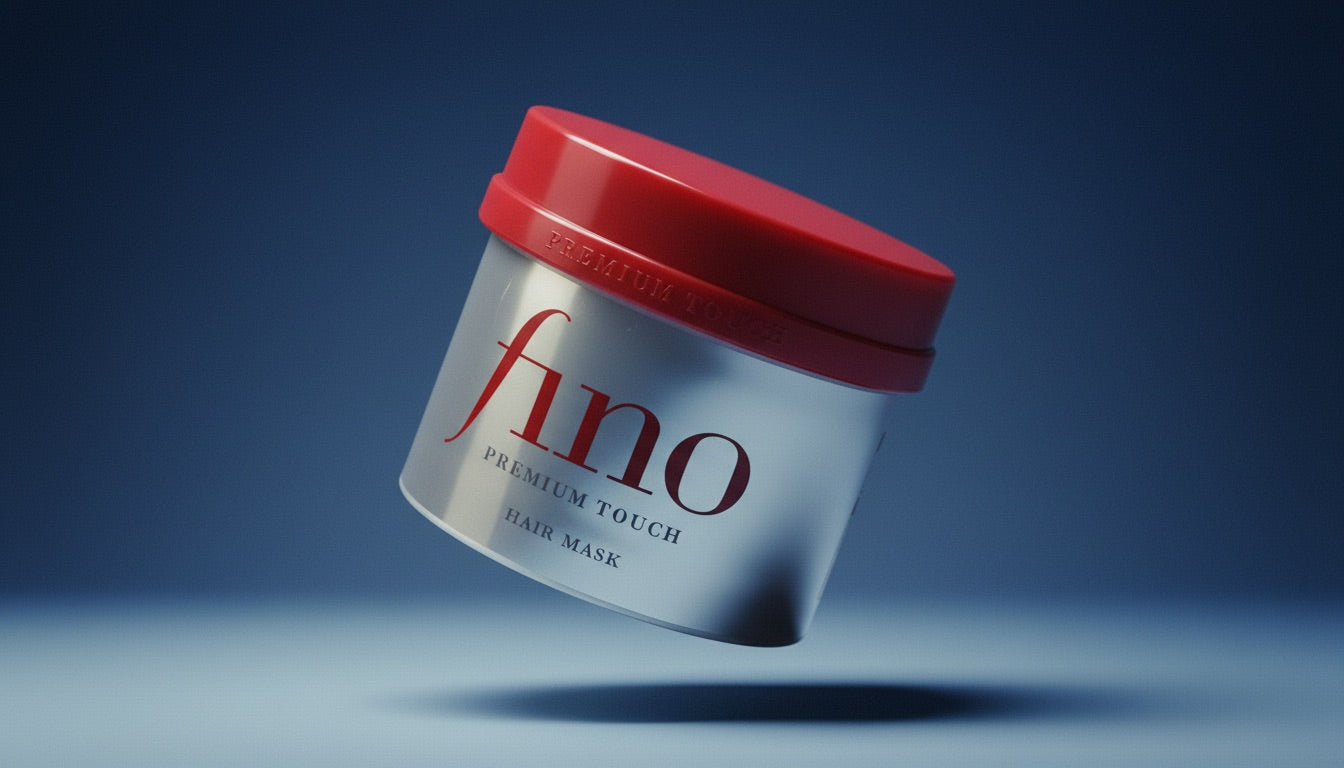
Share:
Korean Skincare vs Japanese Skincare: Which Is Best for You?
Top 8 Best Japanese Mascara for Stunning Lashes